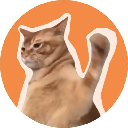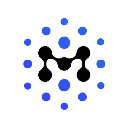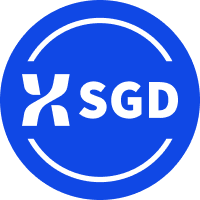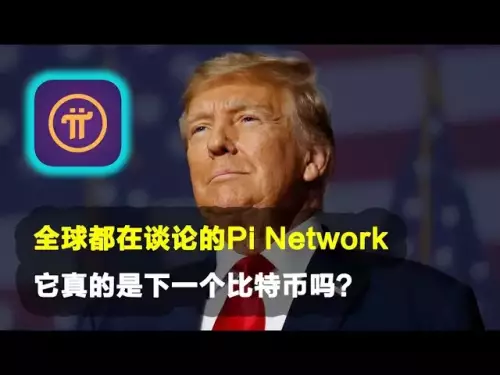-
 bitcoin
bitcoin $100977.009184 USD
-2.05% -
 ethereum
ethereum $3282.009150 USD
-3.23% -
 tether
tether $0.999813 USD
-0.02% -
 xrp
xrp $2.208254 USD
-4.89% -
 bnb
bnb $951.411089 USD
0.55% -
 solana
solana $155.761205 USD
-2.84% -
 usd-coin
usd-coin $1.000217 USD
0.02% -
 tron
tron $0.284475 USD
-1.28% -
 dogecoin
dogecoin $0.162363 USD
-1.53% -
 cardano
cardano $0.533988 USD
-0.47% -
 hyperliquid
hyperliquid $39.174339 USD
-3.22% -
 chainlink
chainlink $14.724828 USD
-1.16% -
 bitcoin-cash
bitcoin-cash $477.297986 USD
-1.28% -
 zcash
zcash $554.227426 USD
17.30% -
 ethena-usde
ethena-usde $0.998995 USD
-0.03%
Why does the market still fall when the moving average is arranged in a bullish pattern? Hidden false breakout traps
Despite bullish moving averages, crypto markets can fall due to hidden false breakout traps set by large traders to mislead smaller investors.
May 29, 2025 at 04:49 am
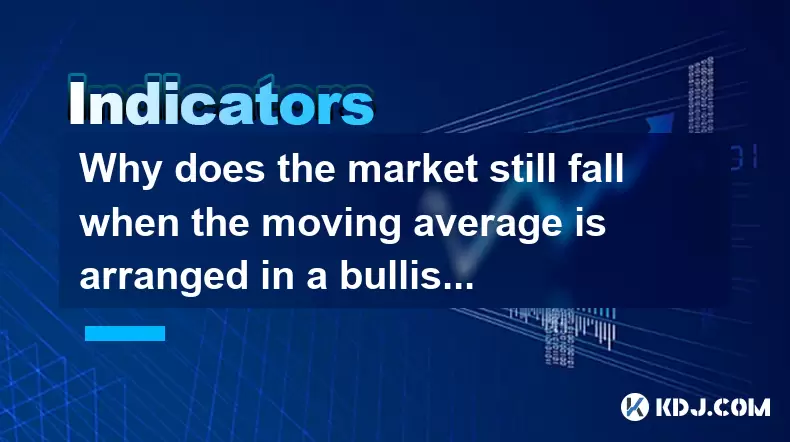
In the world of cryptocurrency trading, understanding market trends and technical indicators is crucial for making informed decisions. One common phenomenon that traders often encounter is the market falling despite a seemingly bullish moving average pattern. This can be attributed to hidden false breakout traps, which are deceptive market movements designed to mislead traders. Let's delve deeper into this issue and explore the intricacies of these hidden traps.
Understanding Moving Averages and Bullish Patterns
Moving averages are one of the most widely used technical indicators in cryptocurrency trading. They help smooth out price data to identify the direction of the trend. A bullish moving average pattern typically occurs when shorter-term moving averages (such as the 50-day or 20-day moving average) are positioned above longer-term moving averages (like the 200-day moving average). This arrangement suggests that the market is in an upward trend.
However, the market can still experience downturns even when these bullish patterns are in place. This is where the concept of hidden false breakout traps comes into play. These traps are strategic moves by larger market players to manipulate price action and catch smaller traders off guard.
What Are Hidden False Breakout Traps?
Hidden false breakout traps are deceptive market movements that occur when the price appears to break out of a significant resistance or support level but then quickly reverses direction. These traps are often set up by institutional investors or large traders who have the power to influence market movements.
The primary goal of these traps is to lure traders into making premature trades based on the perceived breakout. Once smaller traders enter the market, the larger players can then reverse the price, causing losses for those who fell for the trap. This can lead to a market downturn even when the moving averages suggest a bullish trend.
How to Identify Hidden False Breakout Traps
Identifying hidden false breakout traps requires a keen eye and a solid understanding of market dynamics. Here are some key indicators to watch for:
- Volume Analysis: A genuine breakout is often accompanied by high trading volume. If the volume is low during a breakout, it might be a false signal.
- Price Action: Pay attention to how the price behaves after the breakout. If it quickly reverses and falls back below the resistance or support level, it could be a trap.
- Candlestick Patterns: Certain candlestick patterns, such as doji or shooting stars, can indicate potential reversals and false breakouts.
- Market Sentiment: Monitor market sentiment and news to see if there are any underlying factors that could influence the price movement.
Real-Life Examples of Hidden False Breakout Traps
To better understand how hidden false breakout traps work, let's look at a couple of real-life examples from the cryptocurrency market.
Example 1: Bitcoin (BTC) False Breakout: In early 2021, Bitcoin experienced a significant breakout above the $60,000 resistance level. Many traders saw this as a bullish signal and entered the market. However, the price quickly reversed, falling back below $60,000, causing substantial losses for those who bought at the peak. This was a classic example of a hidden false breakout trap.
Example 2: Ethereum (ETH) False Breakout: In mid-2021, Ethereum broke above the $4,000 resistance level, prompting many traders to buy in anticipation of further gains. However, the price soon dropped back below $4,000, revealing the breakout to be a false signal. This trap caught many traders off guard and led to a market downturn despite bullish moving average patterns.
Strategies to Avoid Falling into Hidden False Breakout Traps
To protect yourself from falling into hidden false breakout traps, consider implementing the following strategies:
Wait for Confirmation: Instead of entering the market immediately after a breakout, wait for confirmation that the breakout is genuine. This could be a sustained move above the resistance level or a high volume breakout.
Use Stop-Loss Orders: Setting stop-loss orders can help limit your losses if the market reverses after a false breakout. Place your stop-loss just below the breakout level to protect your capital.
Diversify Your Portfolio: Diversifying your investments across different cryptocurrencies can help mitigate the impact of false breakouts on your overall portfolio.
Stay Informed: Keep up with market news and sentiment to understand the broader context of price movements. This can help you identify potential false breakouts before they occur.
Technical Analysis Tools to Detect False Breakouts
Several technical analysis tools can aid in detecting false breakouts and protecting your trades. Here are a few that are particularly useful:
Bollinger Bands: These bands can help identify volatility and potential false breakouts. If the price breaks out of the upper Bollinger Band but quickly returns within the bands, it might be a false signal.
Relative Strength Index (RSI): The RSI can indicate whether a cryptocurrency is overbought or oversold. If the RSI is in overbought territory during a breakout, it could signal a potential reversal.
Moving Average Convergence Divergence (MACD): The MACD can help confirm the strength of a breakout. If the MACD does not confirm the breakout, it might be a false signal.
Case Study: Analyzing a Hidden False Breakout Trap
Let's walk through a case study of a hidden false breakout trap using a hypothetical scenario involving a popular altcoin.
Scenario: The altcoin has been trading in a range between $100 and $120 for several weeks. The 50-day moving average is above the 200-day moving average, indicating a bullish trend. Suddenly, the price breaks above the $120 resistance level, prompting many traders to buy in anticipation of further gains.
Analysis: Upon closer examination, the breakout is accompanied by low trading volume, and the RSI is in overbought territory. The price quickly reverses and falls back below $120, confirming that the breakout was a false signal.
Lessons Learned: In this case, the low volume and overbought RSI were key indicators that the breakout might be a trap. Traders who waited for confirmation and used stop-loss orders would have been better protected from the subsequent downturn.
Frequently Asked Questions
Q1: Can hidden false breakout traps occur in both bullish and bearish markets?Yes, hidden false breakout traps can occur in both bullish and bearish markets. In a bearish market, a false breakout below a support level can lure traders into short positions, only for the price to quickly reverse and rise above the support level.
Q2: How can I differentiate between a genuine breakout and a false one?Differentiating between genuine and false breakouts involves a combination of technical analysis and market sentiment. Look for high trading volume, sustained price movement, and confirmation from other indicators like the RSI and MACD. Additionally, staying informed about market news can help you understand the broader context of price movements.
Q3: Are there specific cryptocurrencies more prone to hidden false breakout traps?While hidden false breakout traps can occur across all cryptocurrencies, those with higher liquidity and larger market caps, such as Bitcoin and Ethereum, are often more susceptible due to the involvement of institutional investors and large traders who can manipulate price action more effectively.
Q4: How can I use historical data to predict potential false breakouts?Analyzing historical data can help you identify patterns and trends that may indicate potential false breakouts. Look for instances where breakouts were followed by quick reversals and low trading volume. By studying these past events, you can better anticipate and prepare for similar occurrences in the future.
Disclaimer:info@kdj.com
The information provided is not trading advice. kdj.com does not assume any responsibility for any investments made based on the information provided in this article. Cryptocurrencies are highly volatile and it is highly recommended that you invest with caution after thorough research!
If you believe that the content used on this website infringes your copyright, please contact us immediately (info@kdj.com) and we will delete it promptly.
- GlobalPiMarket: Pioneering Real-World Utility in the Pi Economy
- 2025-11-07 11:05:01
- Gemini, XRP, and Leverage: A New Era of Crypto Trading?
- 2025-11-07 11:45:01
- Navigating the Noise: Misinformation, Pi Network, and the Importance of Vigilance
- 2025-11-07 11:15:01
- Pi Network: Mainnet Momentum and the Cryptocurrency Revolution
- 2025-11-07 11:40:01
- Bitcoin's Wild Ride: $100K Peak, Coin Stock Decline, and What It All Means
- 2025-11-07 11:40:01
- Pi Network: KYC Success, Decentralization Strides, and the AI Revolution
- 2025-11-07 11:40:01
Related knowledge

How do professional traders use the TRIX indicator?
Nov 06,2025 at 04:40pm
Understanding the TRIX Indicator in Crypto TradingThe TRIX (Triple Exponential Average) indicator is a momentum oscillator used by professional trader...

How to code a simple TRIX indicator script in Pine Script?
Nov 07,2025 at 06:20am
How to Code a Simple TRIX Indicator in Pine Script The TRIX (Triple Exponential Moving Average) indicator is widely used in cryptocurrency trading to ...

How to trade TRIX indicator signals on the 1-hour chart?
Nov 07,2025 at 05:39am
Bitcoin's Role in Decentralized Finance1. Bitcoin remains the cornerstone of decentralized finance, serving as a benchmark for value and security acro...

Can the TRIX indicator be used for long-term investing?
Nov 06,2025 at 02:19pm
Understanding the TRIX Indicator in Cryptocurrency Markets1. The TRIX (Triple Exponential Average) indicator is a momentum oscillator designed to filt...
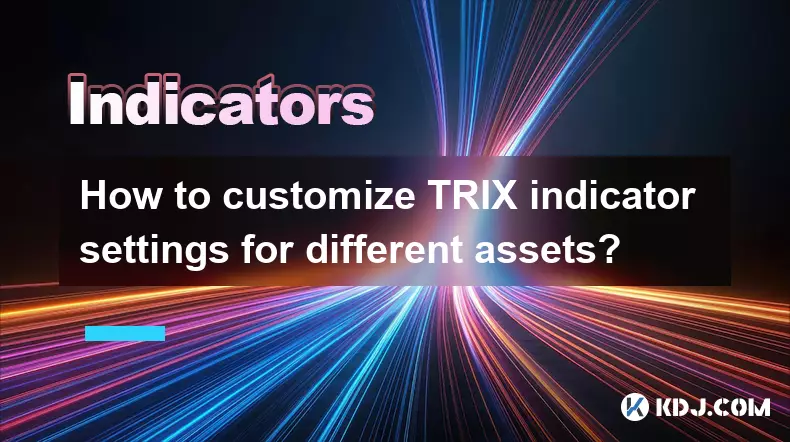
How to customize TRIX indicator settings for different assets?
Nov 06,2025 at 03:39pm
Understanding the TRIX Indicator in Cryptocurrency Trading1. The TRIX (Triple Exponential Average) indicator is a momentum oscillator designed to filt...
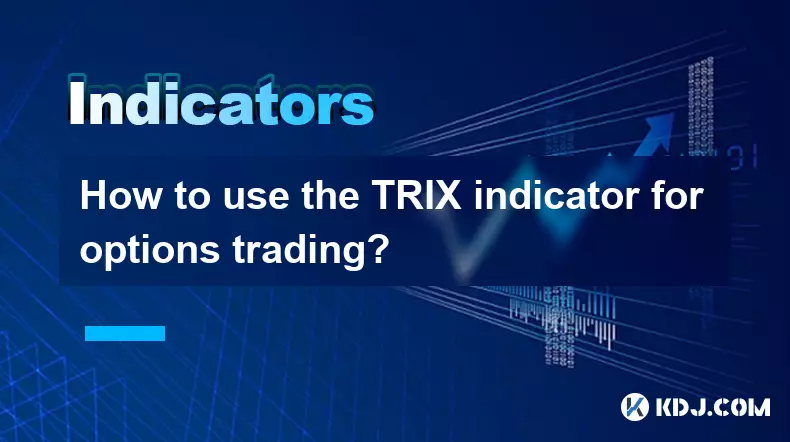
How to use the TRIX indicator for options trading?
Nov 06,2025 at 04:19pm
Understanding the TRIX Indicator in Crypto Options Trading1. The TRIX indicator, or Triple Exponential Average, measures the rate of change of a tripl...

How do professional traders use the TRIX indicator?
Nov 06,2025 at 04:40pm
Understanding the TRIX Indicator in Crypto TradingThe TRIX (Triple Exponential Average) indicator is a momentum oscillator used by professional trader...

How to code a simple TRIX indicator script in Pine Script?
Nov 07,2025 at 06:20am
How to Code a Simple TRIX Indicator in Pine Script The TRIX (Triple Exponential Moving Average) indicator is widely used in cryptocurrency trading to ...

How to trade TRIX indicator signals on the 1-hour chart?
Nov 07,2025 at 05:39am
Bitcoin's Role in Decentralized Finance1. Bitcoin remains the cornerstone of decentralized finance, serving as a benchmark for value and security acro...

Can the TRIX indicator be used for long-term investing?
Nov 06,2025 at 02:19pm
Understanding the TRIX Indicator in Cryptocurrency Markets1. The TRIX (Triple Exponential Average) indicator is a momentum oscillator designed to filt...

How to customize TRIX indicator settings for different assets?
Nov 06,2025 at 03:39pm
Understanding the TRIX Indicator in Cryptocurrency Trading1. The TRIX (Triple Exponential Average) indicator is a momentum oscillator designed to filt...

How to use the TRIX indicator for options trading?
Nov 06,2025 at 04:19pm
Understanding the TRIX Indicator in Crypto Options Trading1. The TRIX indicator, or Triple Exponential Average, measures the rate of change of a tripl...
See all articles

















